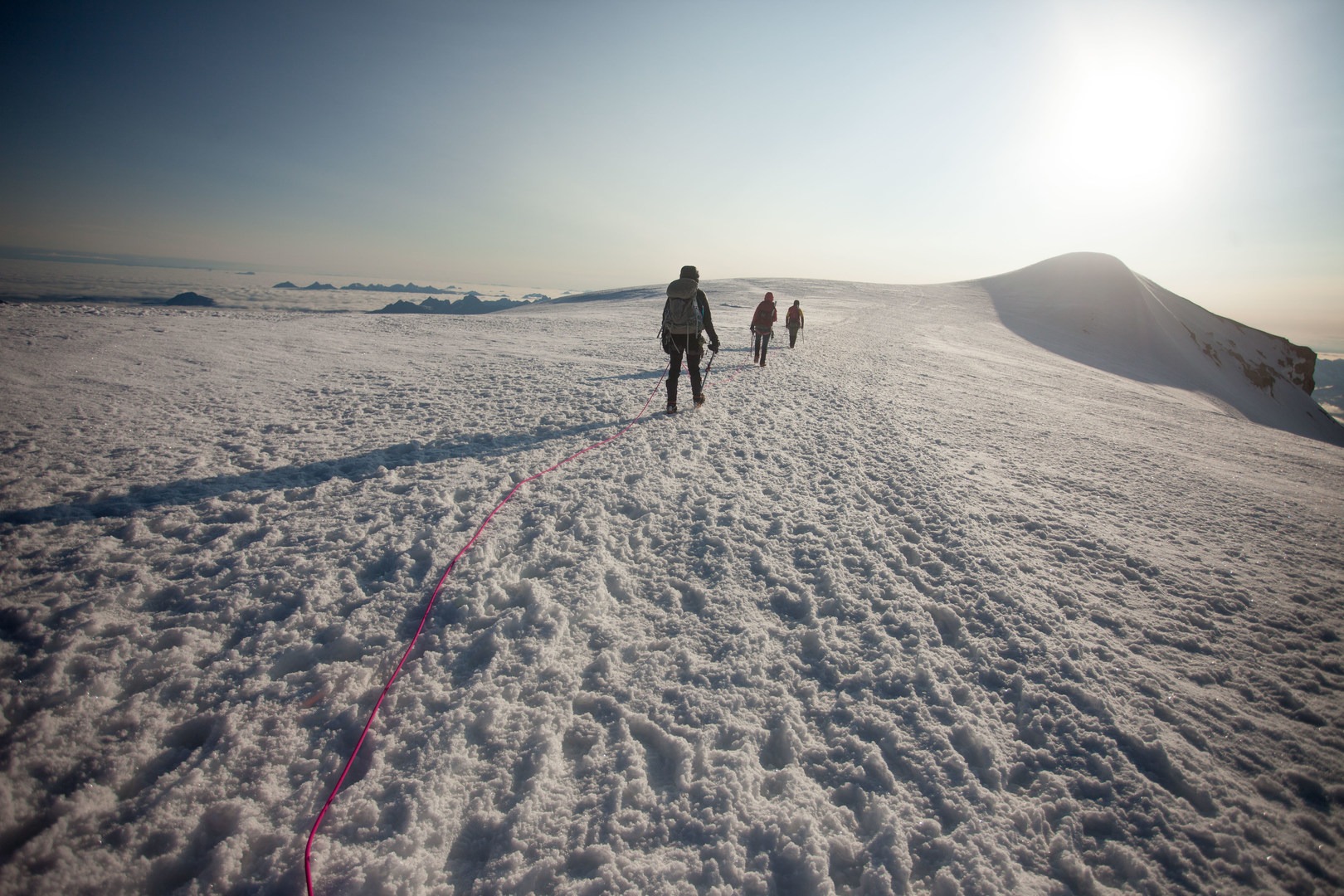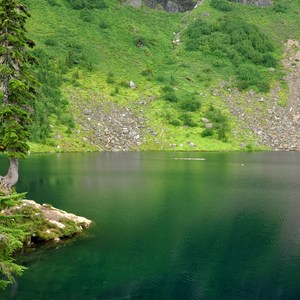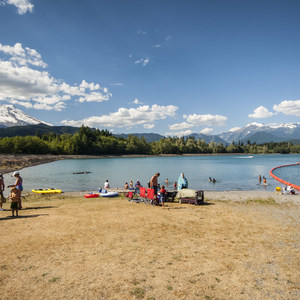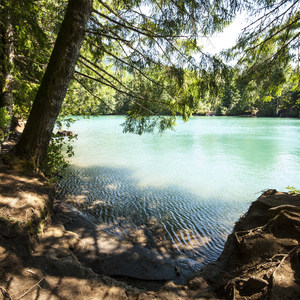You are here
Mount Baker (10,781') is the fourth highest mountain in Washington state, and is easily visible from Seattle and much of the northern Cascades on clear days. It is also the second most heavily glaciated mountain in the Cascade Range (behind Mount Rainier) and is one of the snowiest places in the world, receiving an unbelievable 95 feet of snow in the winter of 1999.
There are a variety of routes up Mount Baker, but the Easton route (named for the glacier that climbers use to access the upper mountain) is one of the more commonly traveled and beginner-friendly options. However, this does not mean it's a casual stroll, and the route requires climbers to be comfortable navigating complex glacial terrain, including large crevasses and a major bergshrund, while managing dynamic weather conditions. The "crux" of this route is the Roman Wall, a steep headwall beginning at roughly 9,750 feet and averaging around 40 degrees depending on the season.
The Easton Glacier route is regularly guided, and often features a well-trenched bootpack, but is not so heavily maintained as the Disappointment Cleaver (DC) route on Mount Rainier and does not have wands or ladders installed. There are also no ranger stations along the route as there are on Mount Rainier beginner routes. As always, climbers should plan to be fully self-sufficient in terms of gear and crevasse rescue abilities.
Depending on your level of competency, fitness, and glacier travel experience, the Easton route can be done as a big day trip or more comfortably as a two day trip, or even longer if you really want to take it slow.
The trail begins at the Park Butte Trailhead, and winds through lush Pacific Northwestf forests and across a braided riverbed for the first 2.5 miles and 1,200 feet of gain, before emerging into alpine meadows. From these meadows, if weather permits, you'll have a great view of Mount Baker and the Easton Glacier above you. If you want to do the route in three days, you can consider camping at the Railroad Grade camps in the area. Otherwise, follow signs to the Railroad Grade, which begins above the alpine meadows. The Railroad Grade (named for its gentle and continuous incline, not because there was a railroad here) is a unique way to gain a ton of vertical. The trail is actually a lateral moraine, pushed into a fin of dirt and rock by the now-receded Emmons Glacier. You'll climb up the Railroad Grade for 1,000 feet, trying not to pay too much attention to the steep drop-off on your right.
The Railroad Grade will put you right at the bottom of Sandy Camp, which is a rocky and sandy section of ridge between 5,800 feet and ~6,300 feet. Sandy Camp is the most commonly used climber's camp for the route. There's often flowing water off to climber's left (just listen for the trickle, or watch to see where other climbers are headed with water bottles), and there are a ton of campsites surrounded by little rock walls. If you want to set a higher camp on the Easton Glacier (to make the next day easier), you can keep heading up, but you'll want to rope up as you transition onto the glacier. Once you've made camp, get some food, water, and rest before your big summit day!
On summit day, you'll wake up extremely early for an alpine start. Transition off the rock ridge above Sandy Camp and onto the Easton Glacier, rope up with your team and head up the mountain. The later you are in the season, the more crevasses will be open, and the more the route will wind between and around crevasses. From the top of Sandy Camp, the route will trend N-NE up toward the crater rim, curving due north as the route comes underneath an unnamed subsummit. Don't get too close to this rocky peak, as it regularly sheds rock, the evidence of which you'll see lying in the snow.
Check out the crater rim and the sulfur-stained snow before heading up the Roman Wall. Depending on how soft or hard the snow conditions are, you'll need to be extremely careful with your footing here. If it's icy, it can be extremely difficult to self-arrest on this slope. You'll slowly slog up the slope, avoiding the bergshrund around 10,000 feet. At the top of the Roman Wall, the angle relaxes to nearly flat (this area is sometimes called "the football field"), and you'll see the true summit around one-third of a mile to your northeast. You'll walk across this wide bench, before climbing the last 50 feet to the true summit.
Enjoy the incredible 360-degree views, as nothing nearby is as tall as Baker. You'll see the Cascades and the other Washington volcanoes spread out south of you, the wild and remote Picket Range to the east, the Olympics and the Puget Sound to the west, and the immense Canadian ranges covering the northern horizon.
Once you've finished admiring the view, the descent is pretty straightforward, and you'll retrace your steps, stepping off the bootpack for uphill climbers on the Roman Wall. Once you're below the crater rim, the bootpack widens, and if you timed your descent properly, you should get some easy plunge-stepping here. Return to camp, pack up, and then head down the Railroad Grade, watching as the mountain recedes behind you.











Comments
Sign In and share them.